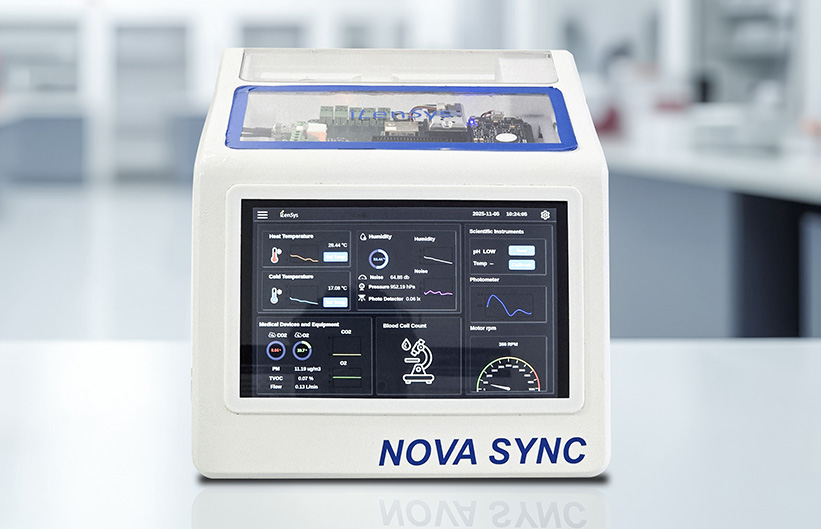Extended Producer Responsibility (EPR) –
A Strategic Approach to Sustainability and Compliance
Executive Summary
Extended Producer Responsibility (EPR) is an environmental policy approach that places responsibility for the entire lifecycle of a product—including post-consumer waste management—on the producer. This includes brands, manufacturers, and companies that introduce packaging and products into the market.
Under EPR frameworks, producers are held accountable—either financially or physically—for the collection, recycling, and proper disposal of their products and packaging once they reach the end of their useful life.
Key Objectives of EPR Programs
EPR programs are designed with clear, measurable goals that align environmental responsibility with operational accountability:
- Increase access to recycling and improve packaging recovery systems.
- Minimize packaging waste and enhance the overall efficiency of recycling infrastructure.
- Reduce plastic packaging by 25% and achieve a 65% overall recycling rate.
- Support long-term plastic recycling targets, including:
-
- 25% by 2028
- 50% by 2040
- 70% by 2050
These targets aim to create a circular economy where producers actively contribute to sustainability through better packaging design, material choices, and support for recycling programs.
What Counts as “Packaging” Under EPR Laws?
As more U.S. states adopt EPR legislation, understanding what qualifies as “packaging” is essential for compliance. The term goes beyond just boxes and bottles—it includes a wide range of materials and products used in the containment, delivery, and presentation of goods.
Under EPR regulations, packaging is defined as any separable and distinct material component used by a producer for the containment, protection, handling, delivery, or presentation of goods—whether those goods are raw materials or finished consumer products.
This definition encompasses much more than traditional packaging. It includes items that are often overlooked but widely used, especially in the food service industry.
Included Packaging Types
The following materials are explicitly included within the scope of packaging:
Plastic single-use food service ware
Plastic-coated paper or plastic-coated paperboard
Paper or paperboard with plastic intentionally added during manufacturing
Multilayer flexible materials, such as composite films or laminates
Common Examples
Here are some specific examples of packaging types typically covered under EPR laws—many of which are used in food service settings:
EPR in the US: States Taking the Lead on Sustainable Packaging
As sustainability and environmental responsibility gain momentum across industries, EPR is emerging as a pivotal regulatory approach in the United States. EPR shifts the burden of waste management from consumers and local governments to the producers themselves— those who design, manufacture, and sell packaging materials. This blog explores which states have passed EPR legislation, what those laws entail, and where similar policies are under consideration.
Seven States Have Passed EPR Laws
As of 2024, seven U.S. states have active EPR laws:
California, Colorado, Maine, Oregon, New Jersey, Minnesota, and Washington.
Each state has its own version of packaging legislation, but most laws focus on reducing packaging waste, encouraging recycling, and ensuring that producers are responsible for the entire lifecycle of their packaging materials.
Regulations and Reporting Deadlines by State
Currently, seven U.S. states have enacted EPR legislation aimed at improving recycling systems, reducing packaging waste, and promoting sustainable product design:
1. Maine – An Act to Support and Improve Municipal Recycling Programs to Save Taxpayer Money (LD 1541)
Maine became the first state to pass EPR legislation on April 22, 2021. The law covers all packaging types and requires producers to participate in a stewardship program designed to enhance recycling and minimize environmental harm. Packaging intended for a minimum use of five years is exempt. The law was implemented 180 days after its introduction.
2. Oregon – Plastic Pollution and Recycling Modernization Act (SB 582)
Introduced on January 11, 2021, and set to be implemented by July 1, 2025, Oregon’s EPR law covers all packaging and paper products. The state has set ambitious recycling targets—25% by 2028, 50% by 2040, and 70% by 2050. Exclusions include packaging for medical drugs and containers related to architectural paint.
3. California – Plastic Pollution Prevention and Packaging Producer Responsibility Act (SB 54)
California’s EPR law, passed on February 25, 2021, goes into effect on January 1, 2027. It applies to all packaging types and mandates a 25% reduction in single-use plastic packaging and food ware by 2032, measured by both weight and unit. Packaging for hazardous or dangerous goods is excluded.
4. Colorado – Producer Responsibility Program for Statewide Recycling Act (HB 22-1355)
Introduced on March 31, 2022, Colorado’s legislation will be implemented by July 1, 2025. It targets all packaging types and paper products, focusing on expanding residential recycling services, with a phased plan to include non-residential entities by 2028. Small producers (those with less than $5 million in revenue or using less than one ton of covered materials) and bound books are excluded.
5. Minnesota – The Packaging Waste and Cost Reduction Act (HF3911)
Minnesota passed its EPR law on February 12, 2024, with an implementation date of January 1, 2029. It applies to all packaging and paper products and aims to enhance waste management infrastructure and encourage sustainable packaging practices. Packaging for medical food and infant formula is excluded.
6. Washington Post-Consumer Recycled Content Law (70A.245)
Washington's Post-Consumer Recycled Content Law (Chapter 70A.245) requires producers to:
- Register with the state and pay annual fees.
- Include a minimum amount of recycled plastic in certain packaging.
- Label products with the producer’s information and a QR code or URL.
- Report the recycled content to the Washington State Department of Ecology.
- Submit annual reports by April 1st.
The law applies to plastic trash bags, beverage bottles (except certain products), and bottles for household cleaning and personal care items, effective from January 1, 2023.
Read more under Guidance for post-consumer recycled content law.
7. New Jersey – Recycled Content Law (P.L. 2021, c. 391)
New Jersey’s Recycled Content Law (P.L. 2021, c. 391) requires manufacturers to meet minimum recycled content standards for glass and rigid plastic containers, plastic and paper carryout bags, plastic beverage containers, and plastic trash bags. The law also bans polystyrene loose-fill packaging.
Key objectives:
- Vitalizes recycling markets and stabilizes recycling costs.
- Helps municipalities with recycling cost unpredictability
Producers must:
- Report recycled content data to the New Jersey Department of Environmental Protection (NJDEP).
- Certify that packaging meets recycled content standards.
- Submit first-year compliance reports by July 18, 2025, and annually thereafter.
Read more NJDEP - Division of Sustainable Waste Management - Recycled Content
Eleven More States Are Considering EPR Legislation
The movement is growing, with 11 states having introduced EPR legislation:
These legislative efforts reflect a broader national trend toward producer accountability and environmental stewardship. While the specific frameworks may vary, the shared goal is clear: reduce packaging waste, boost recycling rates, and encourage innovation in sustainable design.
What This Means for Producers
For companies involved in manufacturing, distributing, or selling packaged goods, EPR regulations represent a significant shift. Businesses must now consider the full lifecycle of their packaging—from design to disposal—and may need to invest in recyclable materials, redesign product packaging, or join producer responsibility organizations (PROs).
Staying ahead of these regulations can be a strategic advantage, not only in terms of compliance but also in enhancing brand reputation, customer loyalty, and environmental impact.
EU Packaging and Packaging Waste Directive: What You Need to Know About EPR and Circular Goals
Packaging waste
EU rules on packaging and packaging waste, including design and waste management
Overview
EU law covers all packaging and packaging waste on the European market, including all materials and packaging in commercial, household, industrial and other sectors.
The rules, first laid out in the Packaging and Packaging Waste Directive 94/62/EC (PPWD) and now the Packaging and Packaging Waste Regulation 2025/40 (PPWR), regulate what kind of packaging can be placed on the EU market, as well as packaging waste management and prevention measures. All packaging must comply with essential requirements related to its manufacturing, composition, and reusable or recoverable nature.
Read more on Packaging waste - European Commission
The EU Packaging and Packaging Waste Directive (Directive 94/62/EC) is a cornerstone of the European Union’s environmental policy. It sets out rules for how packaging is managed across member states—helping reduce waste, support recycling, and transition Europe towards a circular economy.
With the latest amendment (Directive (EU) 2018/852), the directive takes an even stronger stance on prevention, reuse, and recovery, reinforcing the role of EPR and driving innovation in sustainable packaging.
EU EPR at a Glance
- 25 EU Member States have implemented EPR for packaging.
- €3.1 billion in annual fees are paid by producers to EPR schemes.
- Recycling rates rose from 47% (EU-15 in 1998) to 65% (EU-27 in 2012).
As the EU moves towards a more circular and sustainable economy, EPR remains a vital tool for driving accountability and innovation in packaging waste management.
Key Measures to Reduce Packaging Waste
To meet its objectives, the directive requires EU countries to implement:
- National programs and EPR schemes to reduce packaging waste.
- Economic instruments and incentives to encourage sustainable packaging practices.
- Systems that promote reusable packaging, such as:
-
- Deposit-return schemes
- Minimum reuse target
- Financial incentives for producers
Recycling Targets: 2025 & 2030
To support the circular economy, the directive sets ambitious recycling targets:
Rest of the World
India
Key Legislation & Milestones:
- Plastic Waste Management Rules, 2016 (Amended in 2018 & 2022):
- Introduced EPR for plastic packaging.
- Mandates producers, importers, and brand owners to manage waste across pre- and post-consumer stages.
- EPR Guidelines for Plastic Packaging (2022):
- Introduced targets for recycling, reuse, and use of recycled content in packaging.
- Categorized plastic packaging into four types (rigid, flexible, multilayered, compostable).
- Single-use Plastic Ban (July 1, 2022):
- Ban on manufacture, import, stocking, distribution, sale, and use of certain single-use plastic items.
Japan
Key Legislation & Milestones:
- Container and Packaging Recycling Law (1995, enforced 2000):
- Enforces EPR: Manufacturers must bear recycling costs.
- Covers PET bottles, paper cartons, plastic containers, and aluminium cans.
- Act on Promotion of Resource Circulation for Plastics (2021, effective 2022):
- Encourages design for recyclability.
- Mandates reduction of plastic usage and improved sorting.
- Green Purchasing Law (2000):
- Promotes eco-friendly purchasing practices, including packaging.
China
Key Legislation & Milestones:
- Law on the Prevention and Control of Environmental Pollution by Solid Waste (Revised 2020):
- Introduced packaging waste reduction and recycling mandates.
- Plastic Pollution Control Action Plan (2020-2025):
- Phased bans on certain plastics and non-degradable packaging.
- Standards on Packaging Restrictions:
- GB 18455-2010: Limits packaging layers and void space.
- GB/T 31268-2014: General rules for packaging recyclability.
- E-commerce & express delivery packaging rules: Tightened in recent years, e.g., mandates for degradable materials, simplified packaging.
Canada
Key Legislation & Milestones:
- Extended Producer Responsibility Programs (provincial level):
- E.g., British Columbia (2011): One of the most advanced, full producer responsibility for packaging and printed paper.
- Other provinces (Quebec, Ontario, Alberta) have adopted or are transitioning to full EPR models.
- Zero Plastic Waste Agenda (2018):
- National strategy to reduce plastic waste.
- Single-Use Plastics Prohibition Regulations (2022):
- Federal ban on several single-use items (checkout bags, cutlery, etc.).
- Canada-wide Action Plan on Zero Plastic Waste (2019):
- Joint strategy with provinces to align packaging rules, improve design and recyclability.
How Can iLenSys Help?
iLenSys supports companies in complying with EPR under the Packaging and Packaging Waste Directive by providing regulatory mapping, data management, and submission support. We assist in collecting and reporting packaging data and offer guidance on sustainable packaging design to help meet recycling and eco-compliance goals.
Our expertise ensures seamless, risk-free compliance across global markets.
iLenSys helps your business stay compliant and resilient—always.
Schedule a meeting to learn more.
Please Enter your Business Email to download the WhitePapers
ilensys needs the contact information you provide to us to contact you about our products and services. You may unsubscribe from these communications at any time. For information on how to unsubscribe, as well as our privacy practices and commitment to protecting your privacy, please review our Privacy Policy.
Talk to ours Product Environmental Compliance Experts.
By submitting this form, I agree to receive emails about iLenSys's products and services as per the Terms of Use. I can unsubscribe at any time via the 'unsubscribe' link in iLenSys emails or by emailing contact@ilensys.com. I also agree to the Privacy Policy.
Sign up for the latest Blogs, Case studies, Whitepapers, Webinars and Videos.
- Blogs
- Case Studies
- News and Updates
- Videos
- Webinars
- White Papers
-
- Product Environmental Compliance
- Obsolescence Management
- Regulatory & Product Safety
-
-
-
-
-
-
- New Product Development
- Mechanical Design
- FEA Validation
- Benchmarking and Value Engineering
- 3D Scanning and Reverse Engineering
- 3D Printing
-
- Embedded Systems
-
- Industrial Automation
-
- Quality Assurance and Regulatory Affairs
-
- Extended Reality
- 3D Animation & Video Production
- WebGL Development
- Graphics and UI/UX Reality
-
- Technical Documentation
-
- Early Engineering Talent (EET)
-
-
-
- Lab Equipment
- Medical Devices and Equipment
-
- Scientific Instruments
-
- Life Sciences
-
- Static and Mobile Equipment
-
- Material Handling Equipment
-




